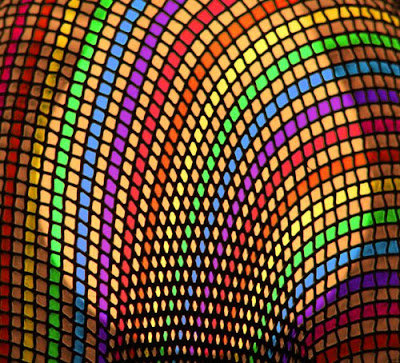The speed and ease of digital cameras and the proliferation of photo editing software makes it possible to produce darkroom-esque results in virtually no time with little skill or knowledge of the darkroom required.
I should know, I'm doing it!
The biggest advantage (or disadvantage, depending on how you look at it) to digital editing: the undo button.
Programs like Photoshop offer so many features and effects that there are literally thousands of ways to manipulate a photograph: Don't like one? Undo and try another.
Color effects, shadows, highlighting, cropping, pasting, erasing, blurring, desaturating - there are countless ways of making a picture more pleasing to the eye.
The art of photography is no longer in the physical skill of developing pictures in a darkroom - that task is now done instantaneously on the computer - but rather in determining what parts of the picture to manipulate and what effects to choose.
One skill that is still required of photographers in the digital age as much as in the film era lies in the composition of a photograph. No matter the plan to manipulate a picture "post click," the photographer still must use his or her mind and eye to determine what it is they want to convey or express in a picture before they take it.
Of course, digital photography has even changed the landscape of composition by allowing picture-takers to preview their scenes on an LCD screen - something film cameras could not offer. Gone are the days of red-eye, being caught mid-blink, and having passers-by interrupt the background of a shot.
They have been replaced by the preview and delete buttons on the camera (or, forget the delete button if your memory card is big enough, and have fun sorting through hundreds of pics later on your computer!).
I don't mean to sound critical of digital media. My interest in photography really began to develop around the time "developing" was losing interest.
My picture-taking days went straight from "film and Walgreens one-hour-photo" to "digital camera and computer editing," completely skipping the "darkroom and manual developing" stage.
The most time I've spent in a darkroom was when I was ten years old and the bathroom of the house we had just moved into in Minnesota had previously been used for developing photos. The single red light bulb in the room gave off an eerie glow, especially at night, and I remember thinking that it was at once a very cool light to have in there, but most inconvenient for any kind of personal grooming that might normally take place in a bathroom.
I hope to explore more of the world of film photography, especially as my digital photography experience increases.
Here is one shot of a light bulb from Emily's ceiling fan shown two ways, each with one simple digital effect applied. The first uses an inversion of colors (i.e. a color negative of the original photo); the second uses a change in hue to accentuate the pattern in the bulb casing.


No comments:
Post a Comment